On Orion
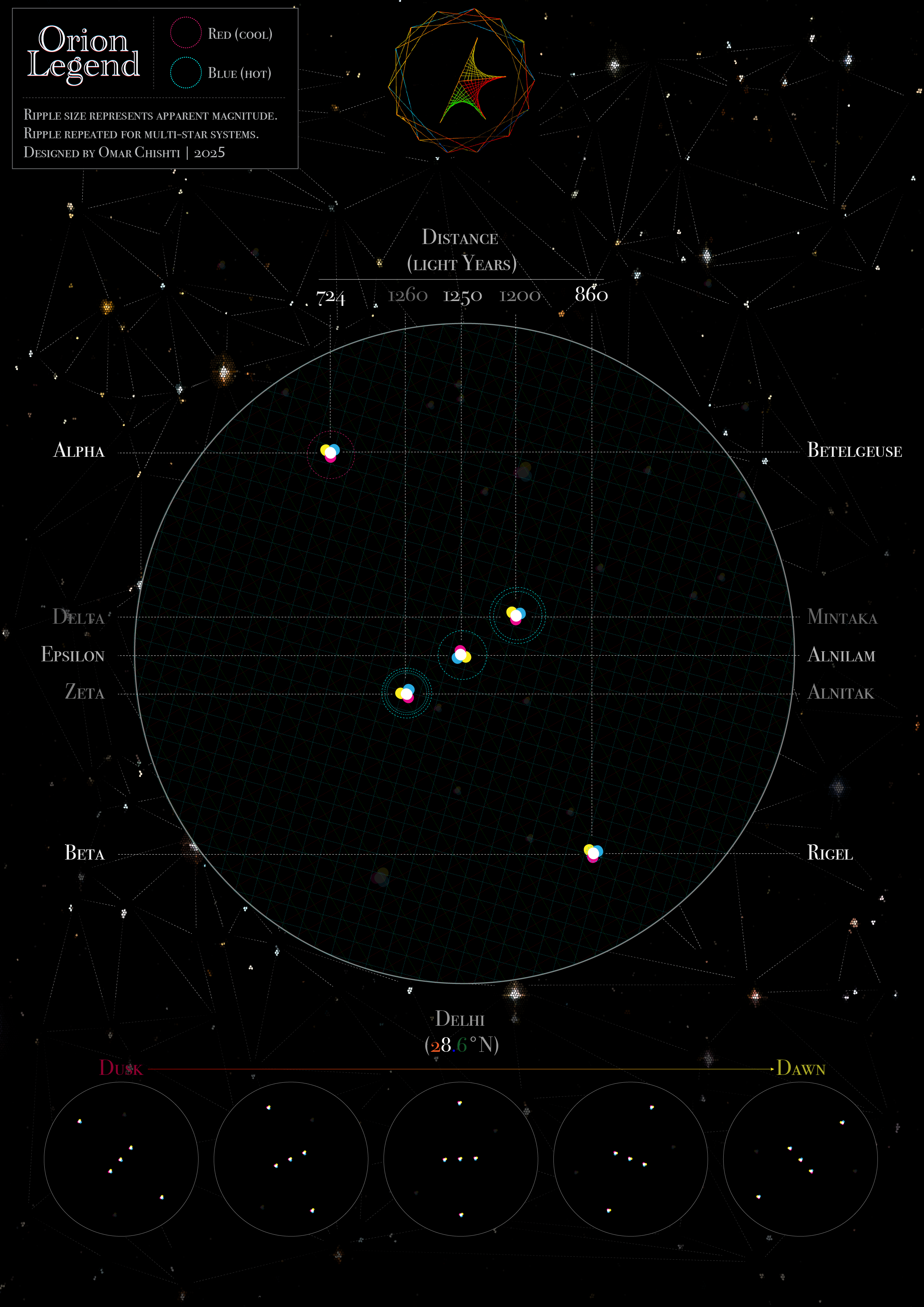
This piece depicts a salient subset of the Orion constellation, a close competitor to the moon for my favourite thing in the night sky.
Childhood Discovery
I first noted this asterism in the winter sky from India at the age of 5 or 6. Bougainvillea bushes, a little bungalow by the boundary walls of the Air Force base. Jodhpur, Rajasthan. Two decades ago. Life has since transported the places I call home to the Middle East, North America, and Europe. Marking this small celestial anchor annually (usually initially by accident, then with intention) has been one of the only constants on that journey.
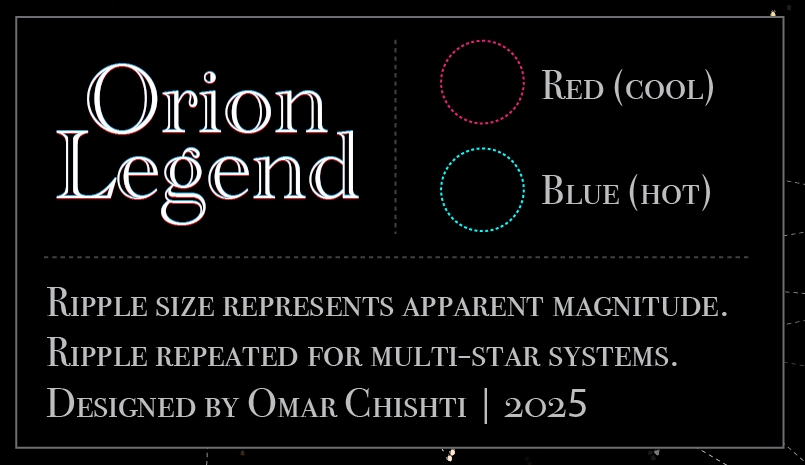
Celestial Geometry
There's something magical about noting the regularity of the three stars arranged in the belt. The bright vertex above, the bright vertex below. A simple symmetry.
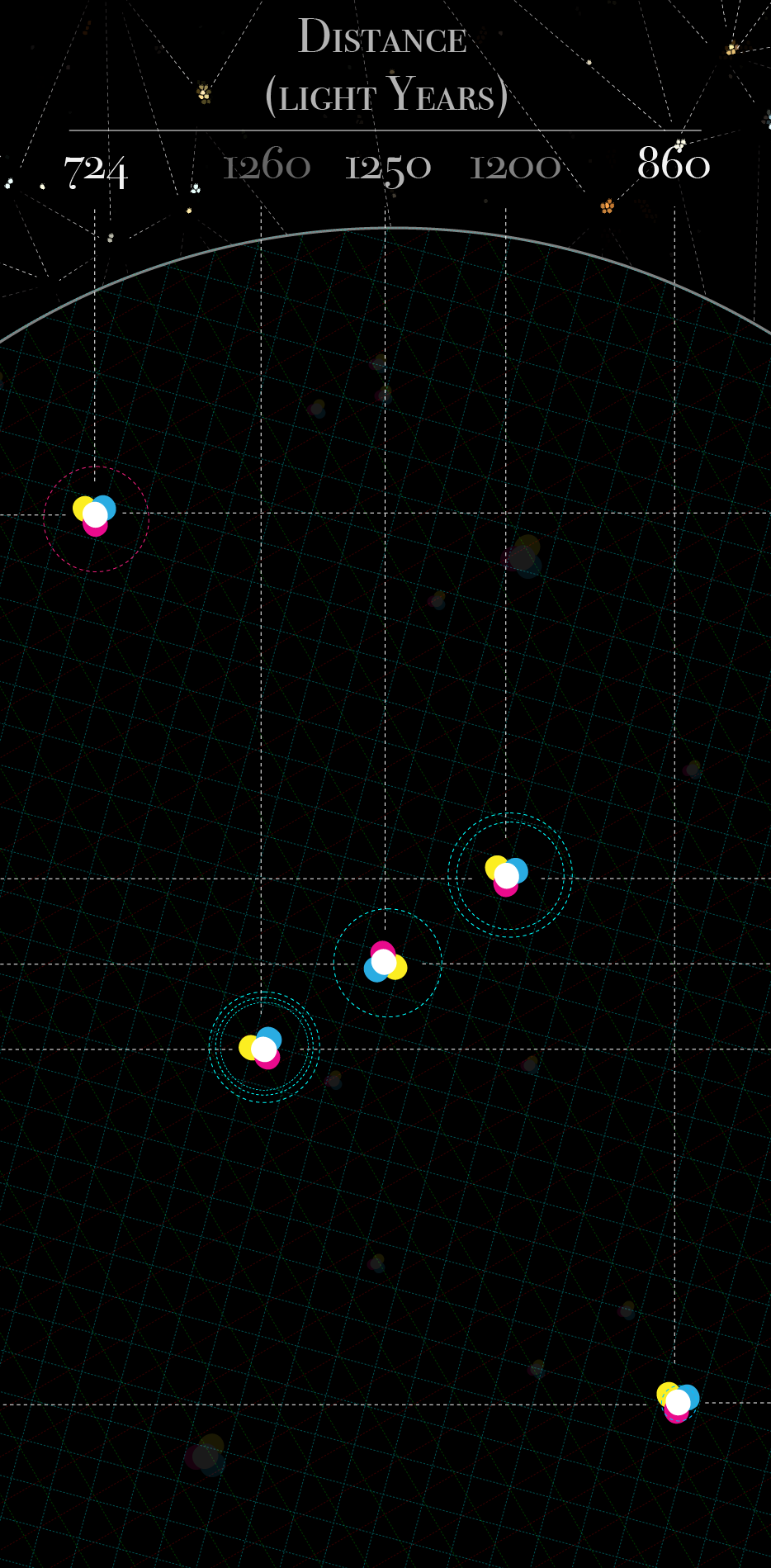
That childhood sighting is a memory I cling to, shielded from all the depredations of time, because something about the image of a boy who discovered a diamond the very first time he looked up and attempted to read the laws written in the stars inspires the man to always keep his eyes open for all the beauty there is to be found in this world.

The position on the celestial equator makes the pattern rotate over the course of night, as if from a wheel journeying through heaven. Selene's chariot.
An interesting effect of the way our eyes work on perceiving the stars is that we find more in the periphery of our vision than at the focus.
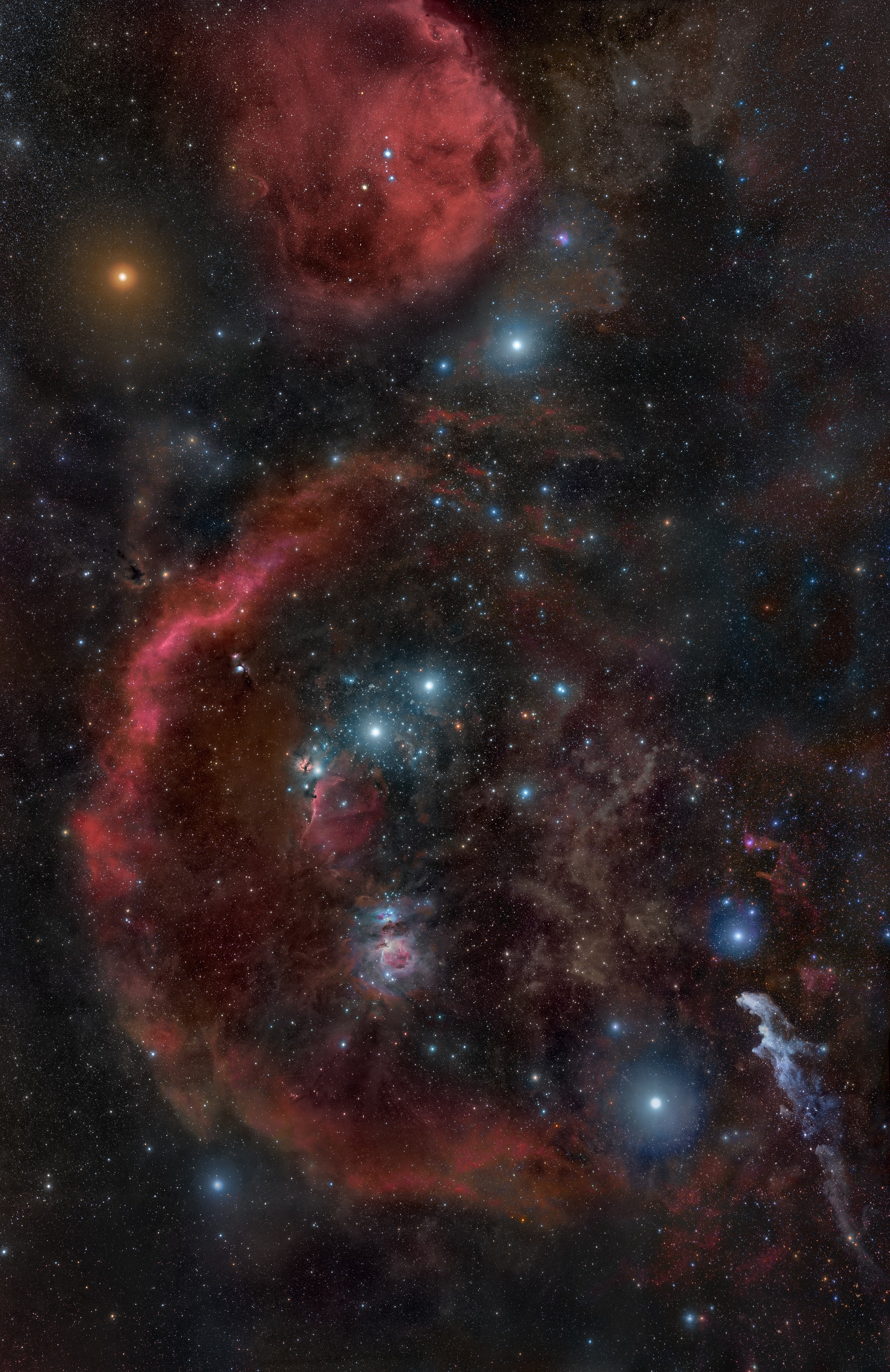
Their vibrant luminosity helped them stand out against the light pollution emanating from the series of cities I've lived in. The laws of physics, matters of dispersion and of distance, seem stacked against the constellation.
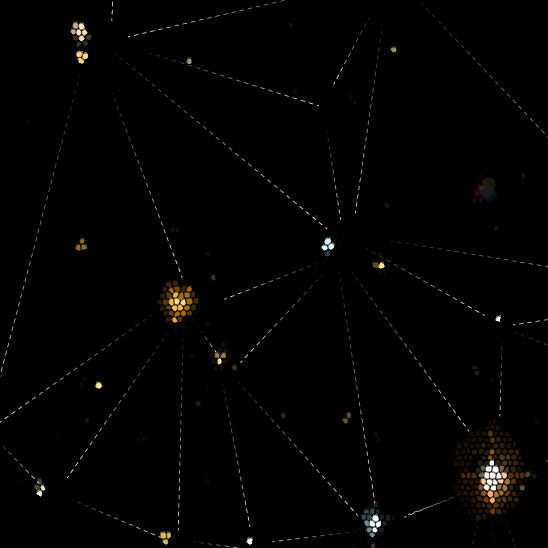
Light Pollution
I find it has grown harder over the years to see stars at all. It feels like blinking planes, headlights from flying cars, lasers on autonomous delivery drones, and fast-moving internet satellites are destined to be their insipid artificial successors. It is dangerous to read ill intent to every callous casualty of modernity, but beyond the scientific curiosity of astronomers and the navigational needs of birds there is a transcendental aesthetic purpose fulfilled for mankind by perusing the stars, in all their conformations, which when swallowed whole by streetlights and skyscrapers threatens to eternally extinguish the sparks that strike fire into the soul. Nocturnal echoes of the gift of Prometheus.
Souls are dangerous constructs, especially in the hands of the people. Slippery, ineffable, capable of desiring change.
I think I would have been a shadowy, insubstantial imitation of myself if I had grown up in environments that failed to preserve darkness, forbidding the perception of faint heavenly light. Dreams withered many moons ago.
A Meditation Practice
I developed a personal meditative habit to counteract the blinding light of the 21st century with some not-so-blinding light. I open up Apple Maps on my phone and zoom out entirely, until the map turns to a globe. The designers of the app placed a rendition of the stars in the backdrop of this interactive model. Technically called a skybox in the 3D modelling world. I scroll around, making the Earth spin and the stars dance.

When I close my eyes in the dark after about a minute of this exercise, focusing on not focusing, the constellations can be conjured on the back of the eyelids. After-images, phosphenes, memory, imagination. Moving the eyes sets them into motion. An interactive planetarium in the head, a skybox in the skull.
If I'm lucky, when I go to sleep afterwards I dream of flying through galaxies. Swimming under clouds of nebulae, across oceans of light. Terrestrial midnight, cosmic noon.
I recommend trying it out on a night you miss the stars. Excellent for inducing some post-doom-scrolling calm and slipping into gentle sleep.